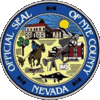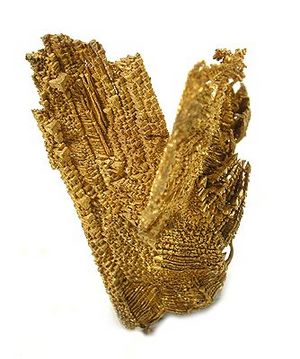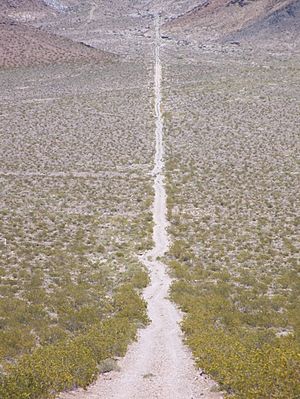Nye County, Nevada facts for kids
Quick facts for kids
Nye County
|
|||
|---|---|---|---|
| Nye County | |||
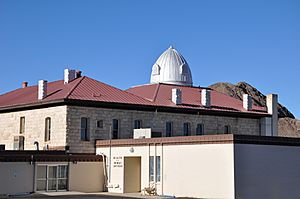
Nye County Courthouse in Tonopah
|
|||
|
|||
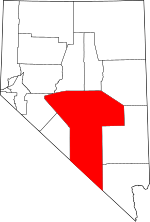
Location within the U.S. state of Nevada
|
|||
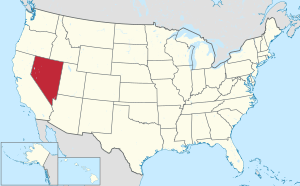 Nevada's location within the U.S. |
|||
| Country | |||
| State | |||
| Founded | 1864 | ||
| Named for | James W. Nye | ||
| Seat | Tonopah | ||
| Largest community | Pahrump | ||
| Area | |||
| • Total | 18,199 sq mi (47,140 km2) | ||
| • Land | 18,182 sq mi (47,090 km2) | ||
| • Water | 17 sq mi (40 km2) 0.1% | ||
| Population
(2020)
|
|||
| • Total | 51,591 | ||
| • Density | 2.83483/sq mi (1.09453/km2) | ||
| Time zone | UTC−8 (Pacific) | ||
| • Summer (DST) | UTC−7 (PDT) | ||
| Congressional district | 4th | ||
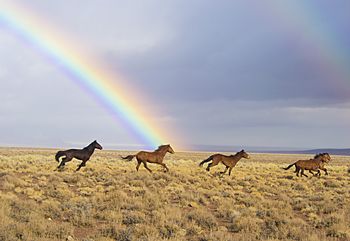
Nye County is a county in the U.S. state of Nevada. As of the 2010 census, the population was 43,946. Its county seat is Tonopah. At 18,159 square miles (47,030 km2), Nye is Nevada's largest county by area and the third-largest county in the contiguous United States, behind Coconino County of Arizona and San Bernardino County of California.
Nye County comprises the Pahrump Micropolitan Statistical Area, which is included in the Las Vegas-Henderson Combined Statistical Area.
In 2010, Nevada's center of population was in southern Nye County, near Yucca Mountain.
The Nevada Test Site and proposed Yucca Mountain nuclear waste repository are in southwestern Nye County, and are the focus of a great deal of controversy. The federal government manages 92% of the county's land. A 1987 attempt to stop the nuclear waste site resulted in the creation of Bullfrog County, Nevada, which was dissolved two years later.
The county has several environmentally sensitive areas, including Ash Meadows National Wildlife Refuge, the White River Valley, several Great Basin sky islands and part of Death Valley National Park. Visitors to Death Valley often stay at Beatty or Amargosa Valley.
The county has no incorporated cities. The seat of government in Tonopah is 160 miles (260 km) from Pahrump, where about 86% of the county's population resides.
Contents
History
Nye County was established during the American Civil War in 1864 and named after James W. Nye. He served as the first governor of the Nevada Territory and later as a U.S. Senator after it was admitted as a state. The first county seat was Ione in 1864, followed by Belmont in 1867, and finally by Tonopah in 1905.
The county's first boom came in the early 20th century, when Rhyolite and Tonopah, as well as Goldfield in nearby Esmeralda County, all had gold and silver mining booms. In 1906, Goldfield had 30,000 residents, Tonopah had nearly 10,000 people, and Rhyolite peaked at about 10,000. These cities were linked by the Tonopah and Tidewater Railroad.
After the boom died, Nye County withered. By 1910, the population had plummeted to about 7,500 before sinking to near 3,000 in the middle of the century. It was not until development at the military test site, increasing employment and resources that the population stabilized. After the 1990s, when Pahrump became a bedroom community for Las Vegas, it had high rates of population growth.
From time to time, there have been discussions of moving the county seat south to Pahrump, or splitting off the southern portion of the county, but neither of these ideas appears to have sufficient support at the county or state government level.
From 1987 to 1989, Bullfrog County, Nevada, was split off from Nye County territory to form a separate political region. The population of Bullfrog County was 0; the county's creation was strictly a political maneuver to support plans for a nuclear waste storage facility in the region. The Western Shoshone challenged this plan, saying they had never ceded land in this territory. No license was granted for the planned Yucca Mountain Repository. The Yomba Indian Reservation is located in this county, as one designated for some of the Western Shoshone people. The Yomba Band of the reservation is a federally recognized tribe.
Geography
According to the U.S. Census Bureau, the county has a total area of 18,199 square miles (47,140 km2), of which 18,182 square miles (47,090 km2) is land and 17 square miles (44 km2) (0.09%) is water. The highest and most topographically prominent mountain in the county is Mount Jefferson at 11,949 feet (3,642 m).
Nye County is located in south central Nevada. Nye is the largest county in Nevada and is the third-largest county in the contiguous United States, after San Bernardino County in California and Coconino County in Arizona. With a land area of 11,560,960 acres (46,785.5 km2), Nye County is larger than the combined total area of Massachusetts, Rhode Island, New Jersey, and Delaware. Of this vast land area, only 822,711 acres (3,329.39 km2), or just over seven percent of the total, is private land; the majority of the county's land are public lands managed by the federal government. Before the Treaty of Ruby Valley, all this area was controlled by the Western Shoshone people, who say they never ceded territory here. According to the United States Census Bureau the county's Census Tract 9805, with a land area of 4,225.415 square miles (10,943.77 km2), comprising the Nevada Test Site and Nye County's portion of the Nevada Test and Training Range, is the largest census tract in the United States that has absolutely no resident population (as of the 2000 census).
Las Vegas, in Clark County, is 100 miles (160 km) southeast of Yucca Mountain. Many Pahrump residents commute 60 miles (97 km) each way to Las Vegas via Nevada State Route 160, which for much of its length is a four-lane divided highway.
Major highways
Nye County has a long stretch of U.S. Route 95, the main road connecting the state's population center in Las Vegas with the state capital in Carson City. Beatty and Tonopah both rely heavily on through traffic to sustain their economies. As of 2006, an average of 2,000 cars daily traveled U.S. 95 near Tonopah.
 Interstate 11 (Future)
Interstate 11 (Future) U.S. Route 6
U.S. Route 6 U.S. Route 95
U.S. Route 95 State Route 160
State Route 160 State Route 267
State Route 267 State Route 318
State Route 318 State Route 361
State Route 361 State Route 372
State Route 372 State Route 373
State Route 373 State Route 374
State Route 374 State Route 375
State Route 375 State Route 376
State Route 376 State Route 377
State Route 377 State Route 379
State Route 379 State Route 844
State Route 844
Adjacent counties
- Churchill County - northwest
- Lander County - north
- Eureka County - north
- White Pine County - northeast
- Lincoln County - east
- Clark County - east
- Esmeralda County - west
- Mineral County - west
- Inyo County, California - south
National protected areas
- Ash Meadows National Wildlife Refuge
- Death Valley National Park (part)
- Humboldt-Toiyabe National Forest (part)
- Spring Mountains National Recreation Area (part)
Demographics
| Historical population | |||
|---|---|---|---|
| Census | Pop. | %± | |
| 1870 | 1,087 | — | |
| 1880 | 1,875 | 72.5% | |
| 1890 | 1,290 | −31.2% | |
| 1900 | 1,140 | −11.6% | |
| 1910 | 7,513 | 559.0% | |
| 1920 | 6,504 | −13.4% | |
| 1930 | 3,989 | −38.7% | |
| 1940 | 3,606 | −9.6% | |
| 1950 | 3,101 | −14.0% | |
| 1960 | 4,374 | 41.1% | |
| 1970 | 5,599 | 28.0% | |
| 1980 | 9,048 | 61.6% | |
| 1990 | 17,781 | 96.5% | |
| 2000 | 32,485 | 82.7% | |
| 2010 | 43,946 | 35.3% | |
| 2020 | 51,951 | 18.2% | |
| U.S. Decennial Census 1790-1960 1900-1990 1990-2000 2010-2018 |
|||
2010 census
At the 2010 census, there were 43,946 people, 18,032 households, and 11,929 families in the county. The population density was 2.4 inhabitants per square mile (0.93/km2). There were 22,350 housing units at an average density of 1.2 per square mile (0.46/km2). The racial makeup of the county was 85.9% white, 2.0% black or African American, 1.6% American Indian, 1.3% Asian, 0.5% Pacific islander, 5.2% from other races, and 3.5% from two or more races. Those of Hispanic or Latino origin made up 13.6% of the population. In terms of ancestry, 18.6% were German, 15.8% were English, 14.7% were Irish, 10.3% were American, and 6.1% were Italian.
Of the 18,032 households, 25.1% had children under the age of 18 living with them, 51.5% were married couples living together, 9.3% had a female householder with no husband present, 33.8% were non-families, and 26.8% of households were made up of individuals. The average household size was 2.42 and the average family size was 2.90. The median age was 48.4 years.
The median household income was $41,181 and the median family income was $50,218. Males had a median income of $51,574 versus $32,152 for females. The per capita income for the county was $22,687. About 14.2% of families and 18.9% of the population were below the poverty line, including 27.8% of those under age 18 and 9.8% of those age 65 or over.
Communities
Census-designated places
Unincorporated communities
Ghost towns
In popular culture
Nye County was a featured location in two episodes of Studio 60 on the Sunset Strip.
Nye County was one of the broadcast locations of American veteran radio broadcaster Art Bell, who was famous for hosting Coast to Coast AM and Art Bell's Dark Matter. He is now on hiatus from broadcasting and resides in the county.
Many episodes from the 1950s Television show "State Trooper" take place in both Tonopah and Goldfield.
Education
The Nye County School District serves all of Nye County and Esmeralda County. The Districts Headquarters is in the county seat of Tonopah. The superintendent of the NCSD is Dr. Warren Shillingburg.
See also
 In Spanish: Condado de Nye para niños
In Spanish: Condado de Nye para niños



